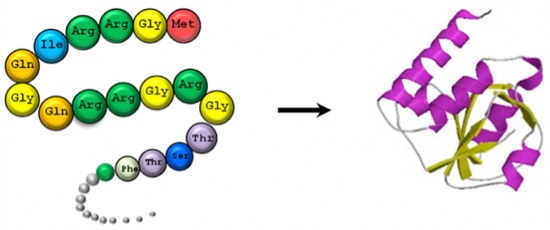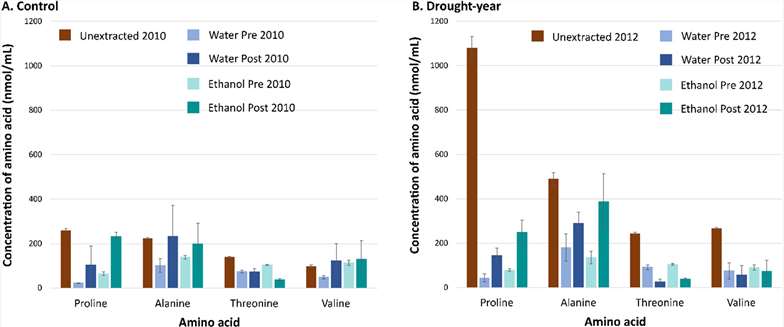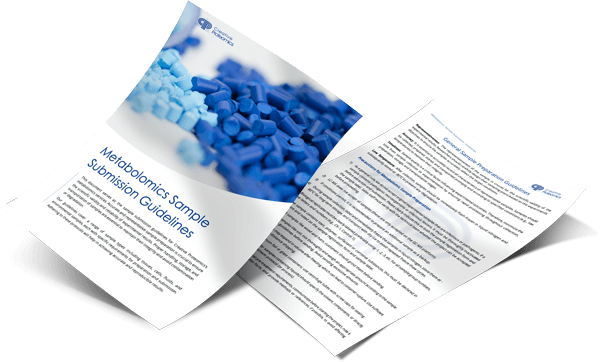Amino Acid Composition Analysis Service: Accurate Protein Profiling for Smarter Research
Understanding the amino acid makeup of your proteins is critical—whether you're decoding structure, assessing function, or studying interactions. That's why the bioinformatics specialists at Creative Proteomics are proud to offer our Amino Acid Composition Analysis Service, designed to deliver highly accurate, publication-ready insights.
Using advanced methods like single sequence and multiple sequence analysis, we provide:
- Comprehensive profiling of amino acid distribution
- Custom analysis pipelines tailored to your research goals
- High-resolution data for improved protein modelling and functional prediction
Submit Your Request Now
×- Introduction
- Our Services
- Advantage
- Platform
- Workflow
- Application
- Sample Requirement
- FAQ
- Case Study
- Publication
What Makes Amino Acid Analysis Essential for Protein Research?
Amino acids are the building blocks of proteins—and the backbone of modern life sciences. Structurally, they contain both an amine group (-NH₂) and a carboxylic acid group (-COOH), plus a unique side chain that defines their identity and behaviour. While only 20 amino acids are encoded by the genetic code, scientists have identified over 500 types in nature. These can be grouped by structure (alpha, beta, gamma), polarity, pH sensitivity, or the chemical nature of their side chains.
In protein form, amino acids make up a major part of human tissues—second only to water. They're critical for everything from cell structure to muscle development and neurotransmitter signaling. Because of this, understanding their composition isn't just helpful—it's essential.
Why Perform Amino Acid Composition Analysis?
If you're working in monoclonal antibody production, protein characterisation, or biomarker discovery, amino acid composition analysis gives you a reliable readout of a protein's building blocks. This technique helps:
- Quantify individual amino acids in a protein or peptide
- Detect structural or functional changes in recombinant proteins
- Verify protein identity and purity across batches
Our clients in therapeutic protein development use this method routinely to ensure their formulations stay consistent, stable, and safe. Whether you're optimising a protein for therapeutic use or tracking post-translational modifications, amino acid profiling delivers the data you need—fast and reliably.

Amino Acid Composition Analysis: A Critical First Step in Protein Characterisation
When characterising peptides, proteins, or antibodies, knowing their amino acid composition is essential—especially before sequencing. At Creative Proteomics, our amino acid composition analysis provides a reliable, quantitative snapshot of the building blocks within your sample.
This method isn't just about identifying amino acids. It helps catch sequencing errors early, refine digestion protocols, and even detect trace levels of rare amino acids like norleucine. Understanding the amino acid profile can guide the choice of protease for hydrolysis and validate sequence integrity—critical for downstream applications such as monoclonal antibody production.
Also known as amino acid profiling or content analysis, this technique accurately determines the type and quantity of amino acids in various samples:
- Individual amino acids or amino acid mixtures
- Short peptides and complex polypeptides
- Intact proteins and therapeutic antibodies
- Drug Safety and Efficacy:
Amino acid analysis helps ensure that peptide-based drugs are structurally correct and function as intended—critical for safety and therapeutic consistency. - Sequence Confirmation:
During the early development of synthetic or recombinant proteins, confirming the primary sequence through amino acid analysis can prevent costly downstream errors.
Comprehensive Amino Acid Analysis Services at Creative Proteomics
At Creative Proteomics, we use a high-performance, fully automated amino acid analyser to deliver accurate, reproducible results across a wide range of sample types.
Our method involves:
- Breaking peptide bonds using strong acid or alkaline hydrolysis
- Releasing and isolating free amino acids from the protein or peptide sample
- Separating and quantifying each amino acid to generate a detailed composition profile
This approach ensures consistency and reliability, whether you're analysing a simple peptide or a complex therapeutic antibody.
We go beyond basic amino acid profiling. Our amino acid analysis platform supports in-depth characterisation of peptides, proteins, and biologics—offering services designed for both academic research and pharmaceutical development.
Here's related services we offer:
Extinction Coefficient Determination: Accurately measure absorbance values for protein quantification.
Concentration Quantification: Determine precise sample concentrations via amino acid-based calculations.
Isoelectric Point (pI) Analysis: Identify the pH at which a protein carries no net charge.
Amino Acid Quantification: Detect chiral isomers using deuterated acid hydrolysis and LC-MS with pre-column derivatisation.
Advanced Amino Acid Analysis (AAA) Service:
Full amino acid sequencing
N-terminal and C-terminal sequencing
Peptide mapping via mass spectrometry
Total Amino Acid Composition Analysis: Including difficult-to-detect residues like cysteine, tryptophan, and hydroxyproline.
Free Amino Acid Profiling: Capture unstable or labile amino acids like asparagine and glutamine.
Unknown Impurity Identification: Leverage LC/QTOF or 2D-LC/QTOF following preparative enrichment to structurally characterise unknown peaks.
Whether you're confirming protein identity, assessing batch consistency, or optimising a purification workflow, our services provide the precision and flexibility you need. Creative Proteomics is your trusted partner for advanced amino acid analysis—from discovery through quality control.
How Creative Proteomics Sets a Higher Standard
While many providers offer amino acid composition services, Creative Proteomics delivers deeper insights, faster results, and tailored support that goes far beyond standard testing. Here's what makes us different:
- Customised Service, Not Cookie-Cutter Packages
We don't believe in one-size-fits-all. Each analysis is tailored to meet your specific scientific goals and regulatory needs. - Speed Without Sacrificing Accuracy
Thanks to high-resolution instruments capable of detecting differences within ±10 ppm, we deliver precise, reproducible data on accelerated timelines. - Cost-Effective Excellence
Our pricing is highly competitive, and our quality standards are never compromised. You get top-tier results at an affordable rate. - Expert-Led Client Support
Every project is guided by experienced scientists who offer technical consultation—from experimental setup to data interpretation. - Regulatory Confidence
Our services comply with ICH Q6B guidelines and align with regulatory expectations across the US, and EU. - Sector-Spanning Solutions
From pharmaceutical R&D to agriculture and food sciences, we support diverse applications with the same scientific rigour.
Advanced Analytical Technology
We use HPLC with PITC derivatization for accurate amino acid quantification, and our lab features top-tier equipment including:
- High-resolution mass spectrometers
- Triple quadrupole MS
- 2D-LC/MS systems
- MALDI-TOF
- GC-MS and ICP-MS


How Is Amino Acid Analysis Performed?

Applications Across Key Industries




Biopharmaceutical Development
Pharmaceutical companies rely on amino acid profiling to validate the purity, potency, and structure of protein-based therapeutics. Regulatory bodies often require this data during the drug approval process.
Food and Beverage Industry
From sports nutrition products to infant formulas, understanding the amino acid content ensures that manufacturers deliver accurate, reliable nutritional information on product labels.
Agriculture and Animal Feed
In animal nutrition, amino acid composition guides the formulation of high-quality feed, reducing waste and improving livestock performance. It supports sustainability efforts by reducing the overuse of unnecessary supplements.
Cosmetics and Environmental Testing
Proteins in skincare products and environmental samples can be analyzed to ensure efficacy and safety. For instance, hydrolyzed collagen used in beauty products is evaluated for its amino acid composition.
Sample Requirements for Amino Acid Analysis
| Sample Type | Sample Format | Sample Amount | Preparation Requirements | Notes |
|---|---|---|---|---|
| Dry Protein/Peptide Samples | Solid | ≥100 µg at 0.5-2 mg/mL | Ensure high purity; lyophilized and free of contaminants | Store dry; avoid moisture exposure |
| Liquid Protein/Peptide Samples | Solution | >100 µL at minimum 0.5 mg/mL | Deionized water or suitable buffer; avoid interfering agents | Fresh or properly preserved |
| Biological Fluids (e.g., plasma, urine) | Solution | 50-200 µL | Centrifuged to remove particulate matter | Use fresh or flash-frozen samples |
| Tissue Samples | Solid or Solution | 10-50 mg | Homogenized, lyophilized, or flash-frozen | Avoid repeated freeze-thaw cycles |
| Food Samples | Solid | 100-200 mg | Dried and ground into fine powder | Avoid additives or preservatives |
| Environmental Samples (e.g., soil, water) | Varies | Varies based on sample type | Pre-treated to remove any interfering substances | Filtered and clarified if in solution |
FAQs About Amino Acid Composition Analysis
What is amino acid composition analysis used for?
To determine the types and quantities of amino acids in a protein sample, supporting sequencing, nutritional profiling, and quality control.
How does HPLC work in this context?
It separates and detects derivatized amino acids post-hydrolysis, allowing for accurate quantification.
What industries benefit?
Pharmaceuticals, food & beverage, agriculture, cosmetics, and environmental science.
Why is it important in drug development?
Confirms sequencing and supports regulatory filings by ensuring the accuracy of peptide therapeutics.
Case Studies: Amino Acid Analysis in Action

Water-soluble saponins accumulate in drought-stressed switchgrass and may inhibit yeast growth during bioethanol production
- Background
- Approach
- Creative Proteomics’ Contribution
- Conclusion
Switchgrass is a promising lignocellulosic feedstock for second-generation bioethanol. However, drought stress alters its chemical composition, leading to the accumulation of plant defense compounds that can inhibit microbial fermentation. In this study, researchers observed complete growth inhibition of Saccharomyces cerevisiae when fermenting hydrolysates derived from drought-year switchgrass.
To pinpoint the source of microbial inhibition, researchers subjected both drought-year and control-year switchgrass to solvent extraction (water, ethanol, and ethyl acetate), followed by ammonia fiber expansion (AFEX) pretreatment, enzymatic hydrolysis, and yeast fermentation. The team used liquid chromatography–mass spectrometry (LC–MS) to identify potential inhibitors and tested the role of specific compounds such as saponins.
A critical part of the investigation was understanding whether extraction treatments inadvertently removed essential nutrients such as amino acids, which might impact yeast performance. Creative Proteomics provided comprehensive amino acid profiling of the hydrolysates using UPLC-MS/MS. Our analysis revealed that although some amino acids like proline and valine were more abundant in unextracted drought-year samples, there was no significant difference between water-extracted (non-inhibitory) and ethanol-extracted (inhibitory) hydrolysates. This helped the researchers conclude that yeast inhibition was not caused by amino acid depletion but rather by the presence of inhibitory compounds like saponins.
 Figure 1. Concentrations of selected amino acids (proline, valine, alanine, and threonine) in water- and ethanol-extracted switchgrass hydrolysates from control (2010) and drought (2012) years. Despite extraction, amino acid levels were comparable between water and ethanol treatments within the same year, indicating that yeast inhibition in ethanol-extracted hydrolysates was not due to amino acid deficiency. Amino acid quantification was performed by Creative Proteomics using UPLC–MS/MS.
Figure 1. Concentrations of selected amino acids (proline, valine, alanine, and threonine) in water- and ethanol-extracted switchgrass hydrolysates from control (2010) and drought (2012) years. Despite extraction, amino acid levels were comparable between water and ethanol treatments within the same year, indicating that yeast inhibition in ethanol-extracted hydrolysates was not due to amino acid deficiency. Amino acid quantification was performed by Creative Proteomics using UPLC–MS/MS.
The study demonstrated that water extraction prior to AFEX pretreatment effectively removed saponins—naturally occurring steroidal glycosides enriched under drought stress—and restored yeast fermentability. Creative Proteomics' precise amino acid quantification was pivotal in ruling out nutrient depletion as a cause of inhibition, thereby strengthening the case for saponins as the main inhibitory agents.
Our Amino Acid Analysis Review

- Characterization of Dnajc12 knockout mice, a model of hypodopaminergia. bioRxiv. https://doi.org/10.1101/2024.07.06.602343.
- An interdisciplinary approach for developing novel methods to study silks. University of Oxford. https://ora.ox.ac.uk/objects/uuid:7d8479a3-5004-4e6d-8cc9-a9a6199a0e37
- Water-soluble saponins accumulate in drought-stressed switchgrass and may inhibit yeast growth during bioethanol production. Biotechnology for Biofuels and Bioproducts. https://doi.org/10.1186/s13068-022-02213-y












